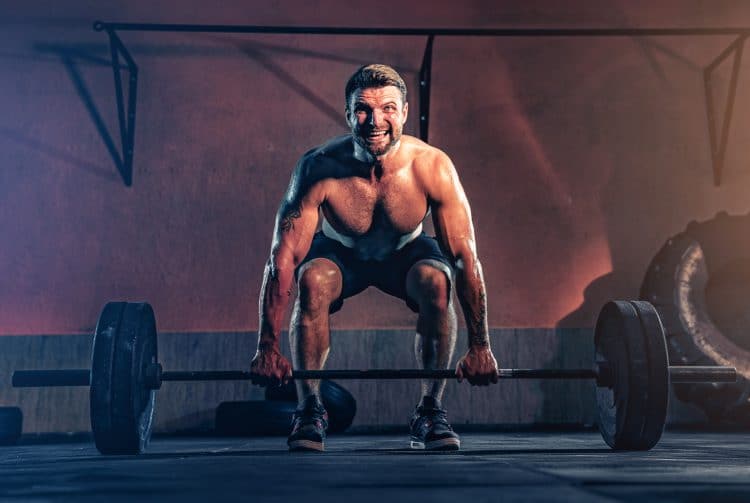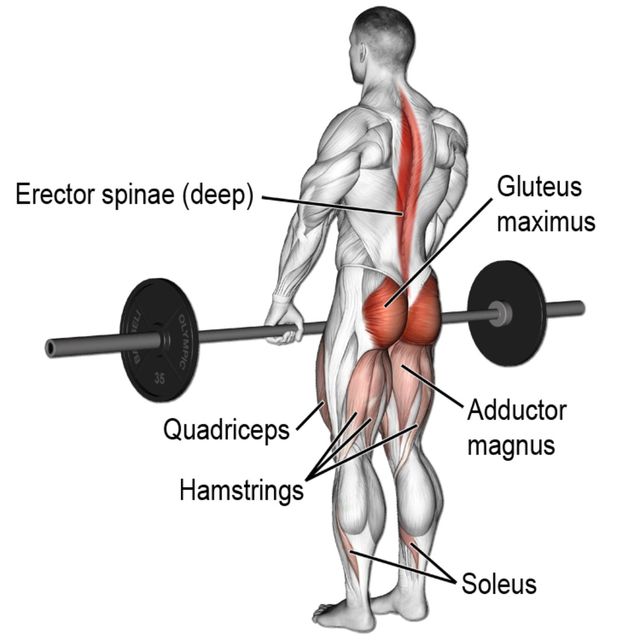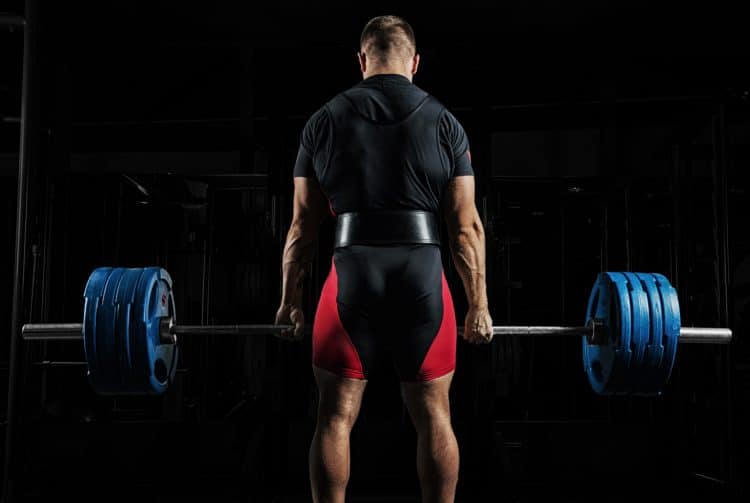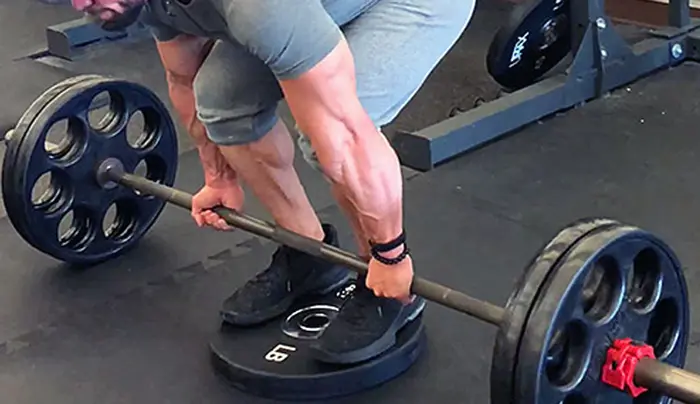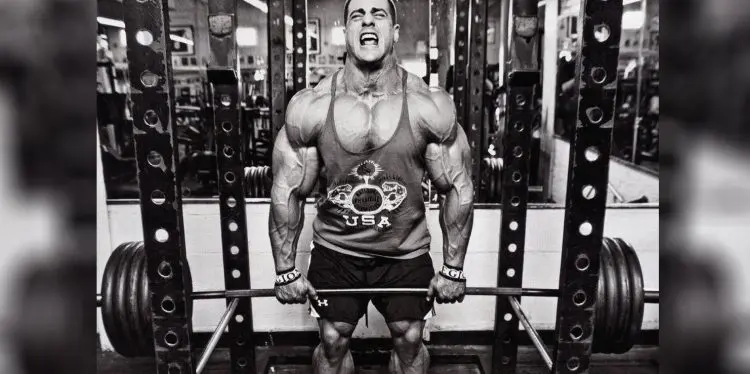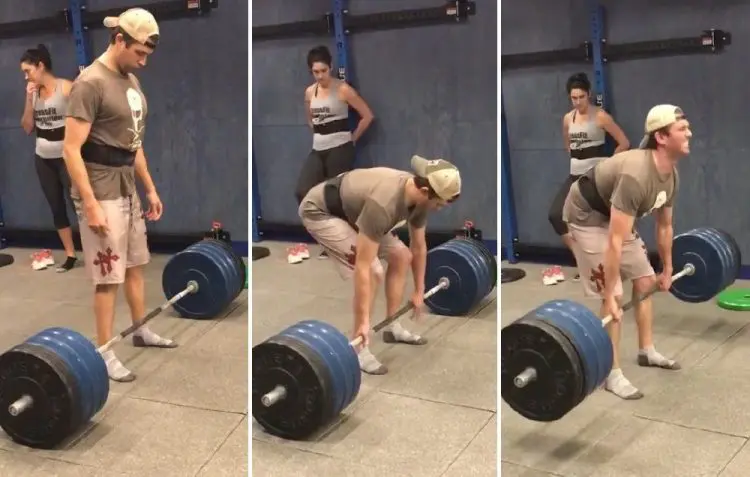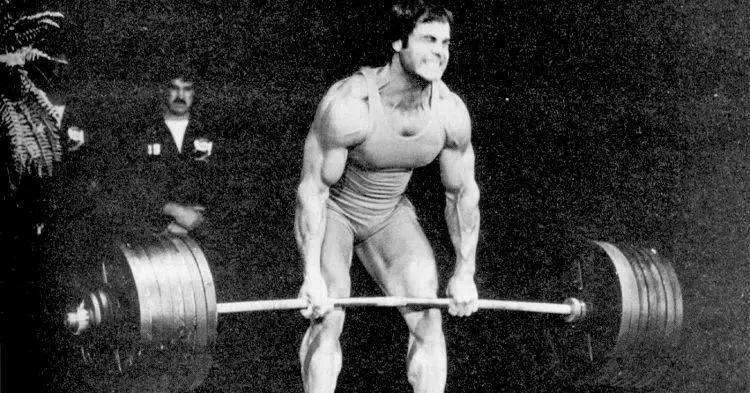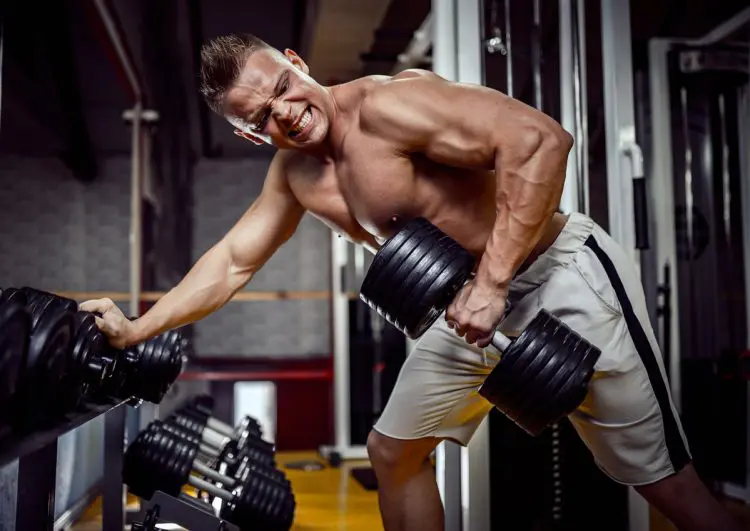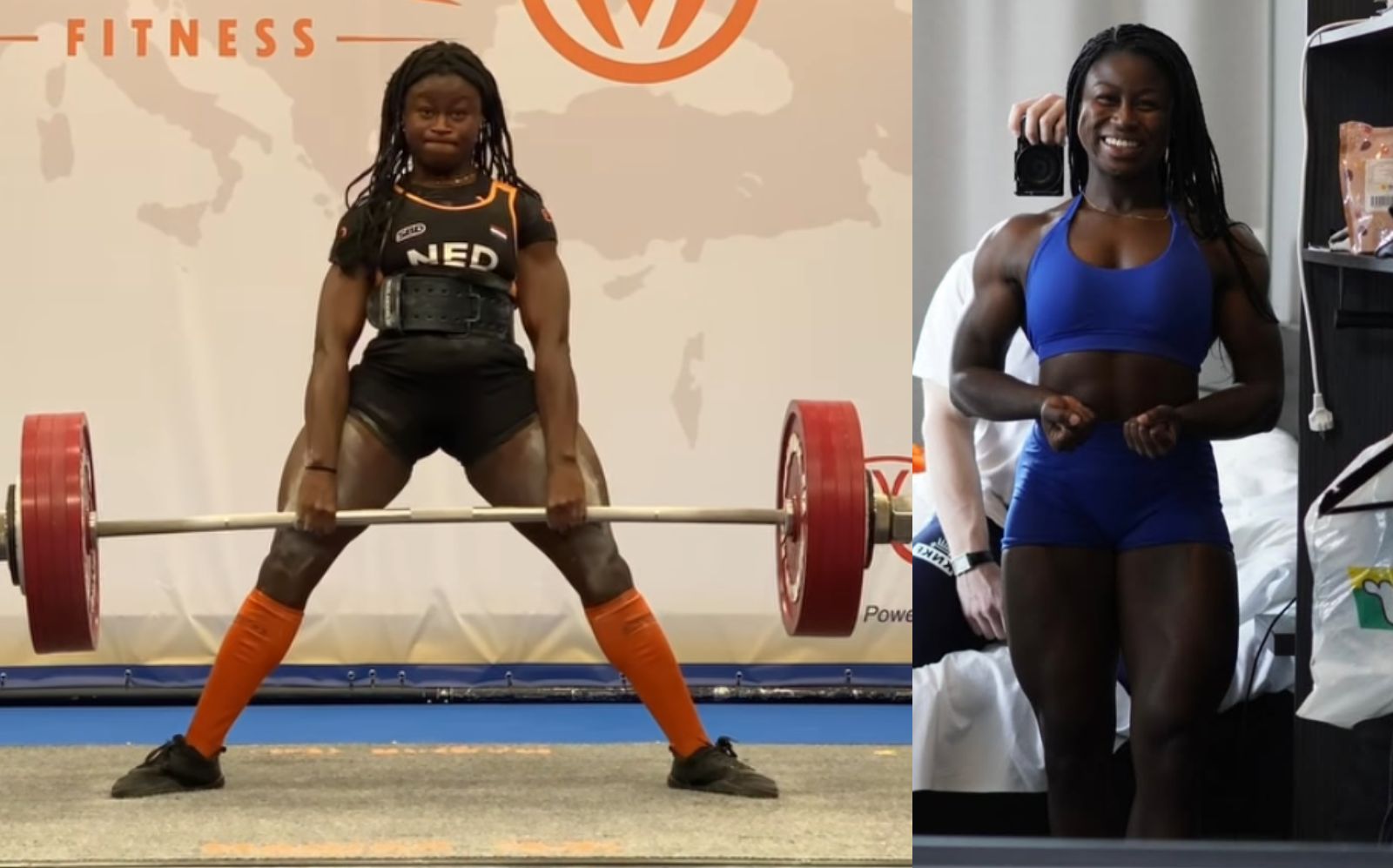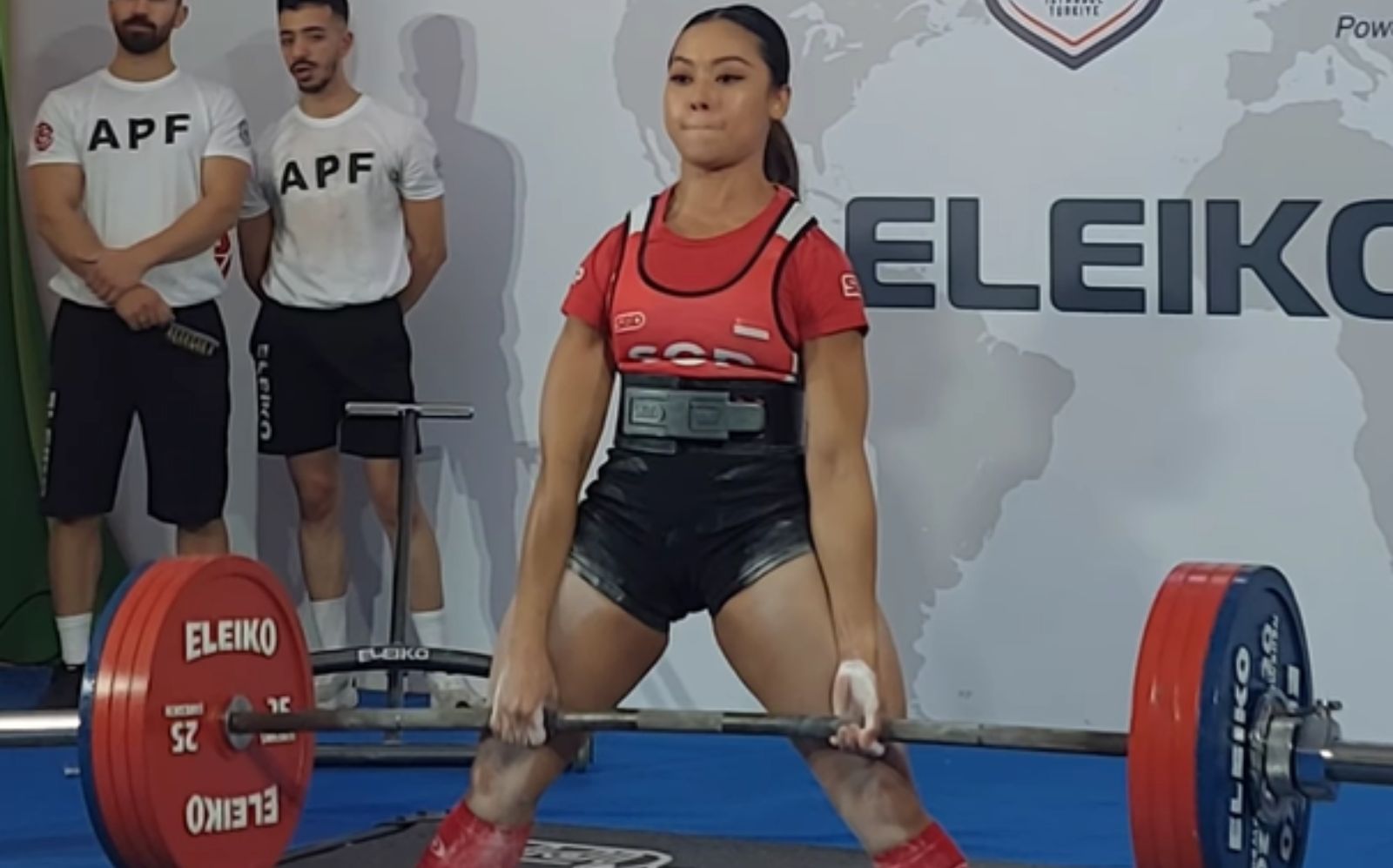The deadlift is a classic barbell exercise. Bodybuilders value it for building back mass, while athletes use it to develop jaw-dropping, functional strength. It’s also the last event contested in powerlifting competitions and a common challenge in many strongman competitions.
You can even use deadlifts to burn fat and lose weight.
The deadlift is a hugely beneficial exercise that involves almost every muscle in your body, but part of its mass appeal is how straightforward it is to learn and master. It’s also a very honest lift that’s easy to judge.
Watch a video of heavy squats, and at least one commentator will be only too quick to say that the lifter failed to hit regulation depth. The same is true for bench presses, where bouncing off the chest is a common trick to lift more weight.
Related – Powerlifting Rule: The Basics
However, apart from hitching the bar up your thighs, there are fewer ways to cheat during deadlifts. Either you are strong enough to lift the weight, or you aren’t.
Level Up Your Fitness: Join our 💪 strong community in Fitness Volt Newsletter. Get daily inspiration, expert-backed workouts, nutrition tips, the latest in strength sports, and the support you need to reach your goals. Subscribe for free!
Initially, deadlifting hard and heavy should be enough to improve your deadlift performance. But, as you transition from beginner to intermediate status, you may find your progress starts to stall, and plain vanilla deadlifts aren’t enough to maintain your progress.
When that happens, it’s time to break out the big guns and use specialized strategies designed to boost your deadlift performance.
In this article, we reveal the best methods and exercises for increasing your deadlift. Start using these methods, and you’ll soon be on your way to a new, bar-bending, deadlift personal record!
12 Strategies to Increase Your Deadlift
If your deadlift progress has stalled, use the following strategies to get back on track. Don’t try and use them all at once; that’s a recipe for disaster. Instead, use 2-3 for a few weeks, and then try another couple. Gradually increase workout intensity over several weeks or months until you are ready to attempt a new deadlift personal record. This is called peaking.
0. Perfect your deadlift technique
Before trying any of the strategies outlined below, make sure your deadlift is as safe and efficient as possible. If you aren’t deadlifting with near-perfect technique, you aren’t ready to try and lift more weight. Fixing your form could automatically lead to increased deadlift performance, not to mention lowering your risk of injury.
Not sure what constitutes good deadlifting technique? Check out our in-depth guide!
1. Lift explosively
Deadlifts are so-called because each rep starts with the bar resting on the floor; it’s a dead weight. Getting a stationary weight moving is not easy and is called overcoming the moment of inertia.
The most efficient and effective way to get a deadweight moving is with speed and momentum. That means you should start your deadlift by lifting the weight as fast as you can. Because the weight is heavy, it’s not going to leap off the floor. However, your intent should be to lift the bar as explosively as possible.
You can increase your power and speed off the floor with various assistance exercises, including box jumps, power cleans, and kettlebell swings, all of which deserve a place in your deadlift workouts.
Related: The Best Power Exercises That Aren’t Olympic Lifts
2. Beef up your posterior chain
Posterior chain is the collective term used to describe your hamstrings, glutes, lower back, and other muscles on the back of your body. Good deadlift performance very much depends on a strong posterior chain.
If you want to lift bar-bending weights, you need to beef up your posterior chain. Deadlifts themselves are a good posterior chain builder, but some more targeted assistance exercises may also be useful.
Effective posterior chain exercises include:
- Romanian deadlifts
- Good mornings
- Reverse hyperextensions
- Hip thrusts
- Cable pull-throughs
- Hyperextensions
3. Improve your grip
It doesn’t matter how strong your legs, back, or arms are; if you can’t maintain your grip on the bar, your deadlift will probably fail. Using a mixed grip can help, where one hand faces forward and the other faces backward. This stops the bar from rolling out of your fingers. Using chalk will also prevent your hands from slipping.
But, if you are serious about upping your deadlift, it’s time to start paying attention to your grip strength. Fat grip training can help, as a thicker bar is harder to hold. Alternatively, there are plenty of great grip and forearm exercises you can add to your workouts, such as farmer’s walks, the wrist roller, and dead hangs.
Alternatively, you can try one of our grip and forearm workouts.
4. Wear a weightlifting belt
When you deadlift, you generate force with your legs, initiating each rep by driving your feet into the floor. That force is then transmitted through your upper body and into the barbell via your core. Ideally, the weight should move at the same speed as your lower body.
However, if your midsection starts to collapse, you could find your hips rising faster than the bar. This is inefficient lifting and could also cause injury as more stress ends up on your lower back.
While you need to work on your core strength (strategy #8), you can boost your deadlift performance by wearing a weightlifting belt. Powerlifters and weightlifters wear lifting belts for a reason; they work! Wearing a stiff belt can help you to generate more intra-abdominal pressure, increasing lumbar spine stability.
Getting the most from a belt requires more than just putting it on and forgetting about it. Instead, you need to work with a belt by bracing your core and pressing outward against it to maximize IAP. However, with practice, you should soon see your deadlift performance increase as you get used to training with a belt.
5. Use chains or bands
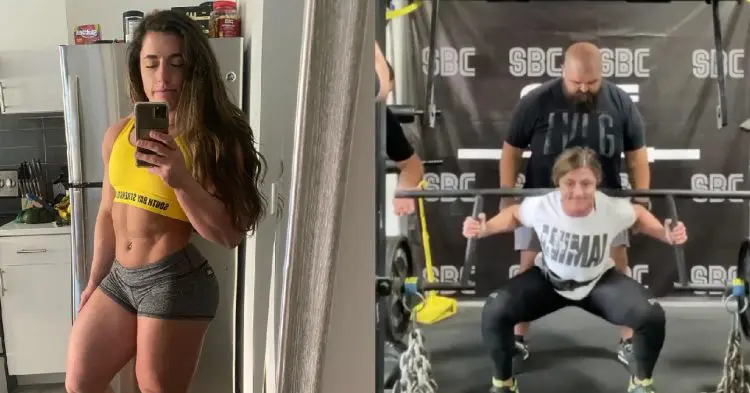
Deadlifting with chains or resistance bands increases the weight as you approach lockout. This is a training method called accommodating resistance. As well as overloading the upper range of motion, using bands or chains teaches you to lift more explosively and develops your ability to use speed to get you past your sticking points.
Bands and chains have a similar effect. Many gyms have chains, but bands are cheaper, lighter, and more portable. If your gym doesn’t have chains, buy a set of bands and keep them in your workout bag. Bands can also be used for bench presses, squats, and several other exercises.
6. Improve your strength off the floor with deficit deadlifts
For most people, the most challenging part of any deadlift is getting the bar off the floor. One way to improve your bottom range strength is to add deficit deadlifts to your workouts. With deficit deadlifts, you stand on a low platform which puts you in a lower starting position compared to standing on the floor.
Level Up Your Fitness: Join our 💪 strong community in Fitness Volt Newsletter. Get daily inspiration, expert-backed workouts, nutrition tips, the latest in strength sports, and the support you need to reach your goals. Subscribe for free!
Deficit deadlifts increase glute, hamstring, and quadriceps engagement, leading to a more powerful pull off the floor.
Learn more about this valuable exercise with our in-depth guide.
7. Strengthen your lockout with rack pulls
If you don’t have chains or bands but still want to build a stronger lockout, rack pulls can help. With rack pulls, you start and finish each rep with your bar at about knee height and resting on the safety bars of a power rack.
Not only do rack pulls let you work on your lockout, the reduced range of motion means you can lift heavier weights. This will lead to increases in general posterior chain, upper back, and grip strength.
Read more about why and how to do rack pulls here.
8. Build a stronger core
A chain is only as strong as its weakest link, and, in deadlifts, the most common weak link is the core. The core is the collective term for the muscles of your midsection, including rectus abdominis, obliques, erector spinae, and transverse abdominis. These muscles connect your upper body to your lower body and stabilize your spine.
Weak core muscles mean your midsection may collapse during deadlifts, leading to dangerous rounding of your lower back, not to mention lost energy and inefficient lifting. In contrast, a strong core means you’ll be able to generate more intra-abdominal pressure, with or without a weightlifting belt.
There are dozens if not hundreds of core exercises you can use to strengthen your midsection. However, for deadlifts, exercises that combine heavy weights with low to medium reps are arguably the best option.
Useful exercises include:
9. Deadlift more often
If you want to get better at something, you need to do it frequently, and deadlifts are no exception. If you follow a body part split routine, you probably deadlift once a week, but that may not be often enough if you want to improve your deadlift performance. Try deadlifting twice a week to get stronger, faster.
However, it would be a mistake to do the exact same workout twice a week. This would soon lead to boredom and progress plateaus. Instead, do two different deadlift workouts using a variety of exercises and even different set and rep schemes, for example:
|
Deadlift workout #1 – e.g., Monday |
Deadlift workout #2 – e.g., Thursday |
||
| Conventional deadlift | 5 sets of 5 reps | Deficit deadlift | 8 sets of 3 reps |
| Rack pulls | 4 sets of 4 reps | Deadlift w/bands | 3 sets of 6 reps |
| Seated leg curl | 3 sets of 10 reps | Prone leg curl | 3 sets of 8 reps |
| Good mornings | 3 sets of 8 reps | Romanian deadlift | 3 sets of 10 reps |
10. Stop doing touch and go deadlifts
We’ve already explained why pulling the weight off the floor is the hardest part of any deadlift rep. To get around this problem, a lot of lifters use a method called “touch and go reps” to try and make the first part of each rep a little easier.
While touch and go reps could help you do more reps or use heavier weights, and are a useful hypertrophy training tool, they are less effective for increasing strength.
So, if you are in the habit of doing touch-and-go reps, it’s time to stop. Instead of bouncing the bar between reps, make sure the weight stops and settles so that you are doing real dead-stop deadlifts. This will make your workout harder, but that’s how you get stronger!
Treat each set as a series of single reps, and you’ll get more from each and every deadlift workout.
11. Try switching stances
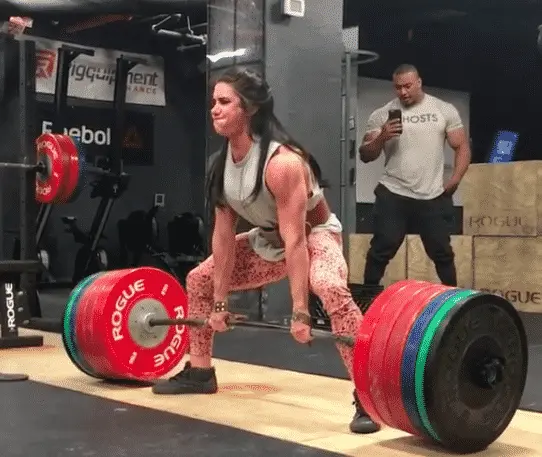
There are two accepted techniques for deadlifts – conventional and sumo. Conventional deadlifts are done with a shoulder to hip-width stance, hands outside the legs. With sumo, the feet are about 1.5 shoulder-widths apart, and your hands are inside your legs.
Depending on your height, mobility, and arm length, you may find conventional deadlifts better than sumo or vice-versa.
The only way to find the best deadlift technique is to try them both and compare your progress. Check out our guide Traditional Vs. Sumo Deadlift, Which Type is Best for You? to learn more about the differences between these two lifts.
12. Build a stronger upper back
Bodybuilders do deadlifts to build a bigger, more muscular back. But, if your upper back is weak, it could also be the link limiting your deadlift performance. During deadlifts, your lats are responsible for keeping the bar close to your legs which creates a better, more efficient line of travel for the bar. Also, your upper back pulls your shoulders down and back, minimizing unwanted movement.
Train your upper back hard and heavy to increase deadlift performance. Some of the best exercises for better back strength include:
13. Lift aggressively
A heavy deadlift is a battle of wills. It’s a contest between your muscles and the weight that you’re trying to lift. While not every deadlift will be a matter of life or death, when you are pushing yourself to your limit, there is no place for half-hearted efforts or anything but total commitment.
Watch this video of Benedikt Magnusson, one-time holder of the world deadlift record. You can almost feel the aggression as he gets pumped up for his lift. He doesn’t waste time or energy on lengthy set-up routines. Instead, he literally runs at the bar, ready to rip it from the ground. And talk about bar speed. That 1015 pounds almost flies up!
While you don’t need to copy Magnusson’s super-quick approach to deadlifts, lifting more aggressively could help you score that elusive personal record. As the saying goes, grip it and rip it! Get angry and direct that anger at the bar. Show it that YOU are the boss. Gravity? Forget about it! You own that barbell, so grip it, crush it, and lift it.
Deadlift Performance – Wrapping Up
The deadlift should be part of your workouts whether you want to build muscle or develop and test your strength. Unlike squats and bench presses, you can deadlift to failure in safety even if you are training alone. Can’t complete a rep? Just lower it back to the floor. No squat rack or spotters required.
Also, the deadlift is almost cheat-proof. You don’t have to worry about hitting the correct depth or pausing until the ref says “press.” Just grab the bar and stand up with it. Simple!
Of course, there IS more to successful and safe deadlifting than that, but it’s certainly less technical than squats, cleans, and bench presses.
Use the strategies in this article to become a better deadlifter. You’ll get stronger, develop a more muscular posterior chain, and undoubtedly enjoy the primitive but rewarding sensation of lifting heavy weights.
Warning: Deadlifts are addictive, so once it’s got its hooks in you, be prepared to spend lots of time and energy on this classic barbell exercise.


